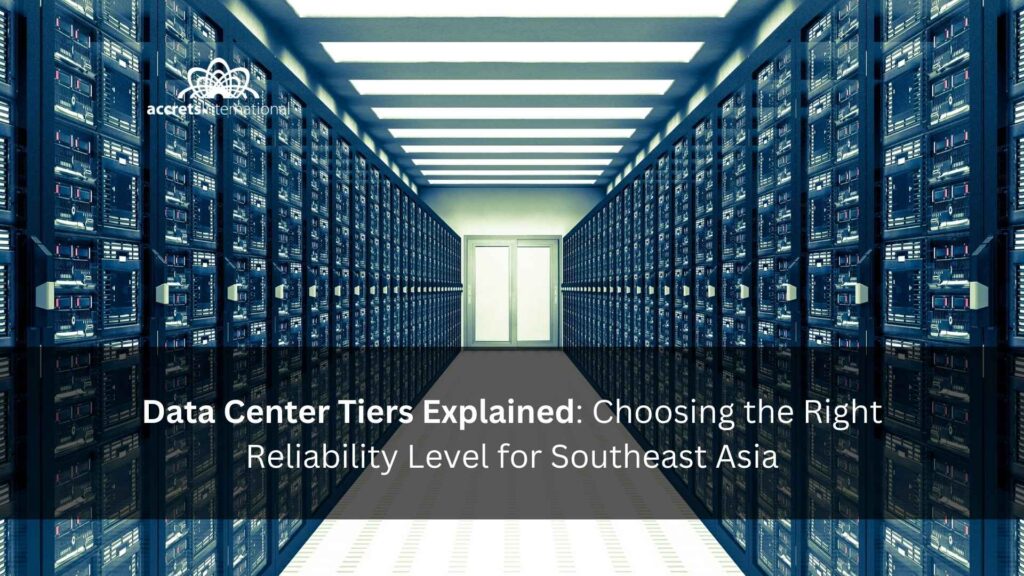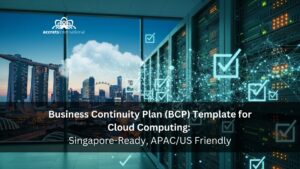Data center tiers define the reliability, redundancy, and uptime you can expect from your IT infrastructure. In this guide, we break down Tier 1, Tier 2, Tier 3, and Tier 4 data centers, compare their differences, and explain how to choose the right tier for your business in Singapore and Southeast Asia. If you want to understand what each tier means, why it matters, and how to avoid costly downtime, read on to the end—we’ll walk through every tier and finish with an expert FAQ that answers all your common questions.
Table of Contents
ToggleTL;DR Table — Downtime & Redundancy at a Glance
| Tier | Uptime Guarantee | Max Downtime / Year | Redundancy Pattern | Typical Use-Case |
| I | 99.671 % | 28.8 hrs | N (single path) | Dev/test labs, small offices |
| II | 99.741 % | 22 hrs | N+1 (redundant parts) | Growing SMEs, edge POPs |
| III | 99.982 % | 1.6 hrs | 2N (dual paths) | Always-on SaaS, banks’ non-core |
| IV | 99.995 % | 26.3 min | 2N+1 (fault-tolerant) | Trading floors, payment rails |
This table is your quick reference: the jump from Tier I to Tier IV buys about 28 more hours of uptime per year, but also comes with a steep increase in cost and complexity.
Where the Tier Model Came From
The tier model was created by the Uptime Institute and is referenced in ANSI/TIA-942-B. Singapore’s IMDA and other ASEAN regulators often align with these definitions when assessing facilities for compliance or tender qualification. Government projects such as the GCC—Government Cloud Singapore often reference Tier III or Tier IV designs for mission-critical workloads.
Tier 1 — Basic Infrastructure for Budget-Conscious Workloads
Tier 1 data centers offer the most basic infrastructure with no redundancy, built on a single power and cooling path.
As explained in our full Tier 1 data center definition, this type of facility is suitable for non-critical applications like dev/test environments or archival storage where downtime is tolerable.
While Tier I is the most affordable, it does come with risks—such as unplanned outages during maintenance and potential SLA violations for hosted services. Many growing businesses look to cloud alternatives. Our guide on the advantages of Infrastructure-as-a-Service walks through those scenarios.
Tier 2 — Redundant Components Without Full Fault Tolerance
Tier II enhances resilience with N+1 redundancy on components like UPS or cooling, but still uses a single distribution path.
This setup is ideal for SMEs, retail banking applications, and regional data centers where some level of availability is expected, but 24/7 uptime isn’t strictly required.
To ensure your infrastructure aligns with security standards like MAS TRM or PDPA, visit our cloud security consulting services in Southeast Asia.
Tier 3 — Concurrent Maintainability for 24×7 Commerce
Tier III introduces dual distribution paths and supports concurrent maintainability. It allows any component to be taken offline for maintenance without disrupting the live environment.
Explore our full explanation of Tier 3 data center architecture, which shows how this level balances performance, risk, and cost for mission-critical workloads like banking, SaaS, or ERP.
To support Tier III operational demands, many businesses turn to managed IT services that offer 24×7 support and compliance monitoring.
Tier 4 — Fault-Tolerant Architecture for Mission-Critical Transactions
Tier IV delivers fault tolerance using a 2N+1 model, ensuring no single point of failure. It limits downtime to roughly 26 minutes per year, making it ideal for high-frequency trading systems, digital banking, or national payment networks.
Our in-depth guide to Tier 4 data centers covers how this design meets the highest standards of uptime and regulatory resilience, especially under frameworks like MAS-TRM.
Cost vs Risk: The Southeast Asia Decision Matrix
When planning infrastructure, think in terms of cost versus risk. Here’s how different organizations typically align:
- Low cost, low risk: Tier I or IaaS
- High cost, low risk: Tier II
- Low cost, high risk: Tier III with external SLAs
- High cost, high risk: Tier IV for regulated industries
Downtime is expensive. For some, one minute of downtime can mean thousands in lost transactions or reputational damage. Investing in the correct tier can be more than insurance—it can be business continuity.
Certification & Audits in ASEAN
The certification process includes three phases:
- Submitting the design for approval
- On-site testing for constructed facilities
- Ongoing operational reviews to retain certification
In ASEAN, regulators like Thailand’s BOT or Indonesia’s OJK require Tier III or IV certification for licensed digital banks and fintech operators.
Hybrid & Cloud Overlays: Why Tiers Still Matter
Even if you use public cloud services, understanding the tier behind the facility still matters for SLA alignment and risk mitigation.
- If you’re migrating from VMware, see our analysis of VMware alternatives
- Learn the difference between Platform and Infrastructure as a Service to assign risk correctly
- Discover how Infrastructure-as-Code vs IaaS affects your uptime strategy
Future Trends: Modular, Edge & Sustainability
- Tier III modular data centers support edge computing use cases across Southeast Asia
- Sustainable cooling and green power are becoming priorities in Singapore’s heat-intensive climate
- ESG frameworks increasingly influence tier selection for large MNCs
5-Step Checklist — Picking Your Tier
- Classify workloads by downtime impact
- Calculate risk-adjusted cost of failure
- Check regulatory minimums (PDPA, MAS TRM)
- Vet facility SLAs and roadmaps
- Simulate real failure scenarios before committing
Need Help? Talk to an Accrets Cloud Expert
Still unsure which tier aligns with your current and future workloads? Book a free consultation with our cloud architecture team today. You can also explore our full portfolio of Managed IT Services to ensure uptime compliance, scalability, and operational peace of mind.
Dandy Pradana is an Digital Marketer and tech enthusiast focused on driving digital growth through smart infrastructure and automation. Aligned with Accrets’ mission, he bridges marketing strategy and cloud technology to help businesses scale securely and efficiently.




